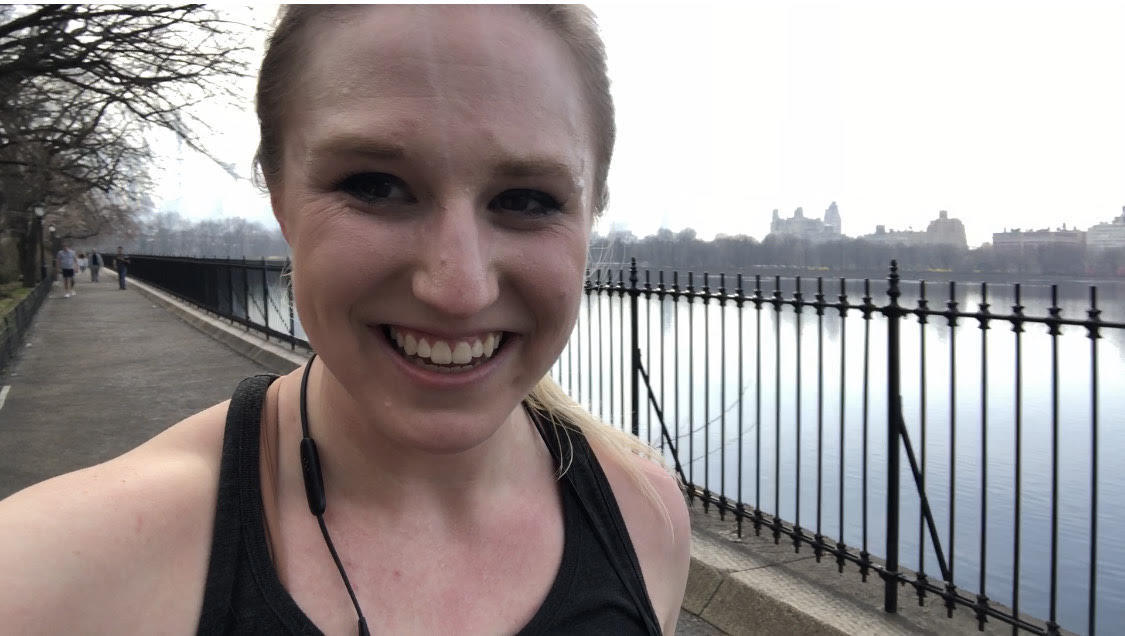Life with T1D in Quarantine

Hi everyone! My name is Sarah, and I’ve had type 1 diabetes (T1D) since 2013. I want to share what I’ve been thinking about in the times of coronavirus as a young adult with T1D.
I’m not a medical expert, or an expert in anything at all really. I’m just a person with T1D who’s trying to keep it together and get through this quarantine the best I can.
I know so many of you are trying to do the same thing. My hope is that my ideas might help some of you, or at least help you see that while apart, we are still in this together.
Today my focus is going to be on insulin sensitivity, because that’s been top of mind for me over the past 22 days of sitting in my apartment. Between hardly moving, having 24/7 access to all my quarantine snacks and generally high levels of anxiety, my blood sugars have been higher than I normally like. So, I’ve made some really minor changes to my routine over the last few weeks to try to stabilize my blood sugar as much as possible.
Here are some baby steps I’ve taken that are making a difference for me:
1. Move around every hour.
Consistent movement has been helpful in managing my blood sugar, but it’s also made my whole body feel better. Getting up to do a lap around my 350 sq. foot NY apartment gets the blood flowing enough to bring the feeling back to my lower half and reminds my body that it can, in fact, get up from the couch.
We know exercise is important, but I think we often forget that moving throughout the day is key for general well-being. Do a big stretch and elongate all your muscles as much as you can, chase a pet around, do a silly dance in the general direction of the people you live with, whatever, but be sure you’re getting some movement sporadically throughout the day!
My cat, Gracie, who desperately wants me to leave the apartment.
2. Go for a run or a long walk every day.
Sitting around for 23 hours a day has made me crave exercise in a way that I never have before, and I didn’t realize I needed it until I started doing it. I have found that I’m most sensitive to insulin for a day or two after my workout session if I spend 30 minutes doing high intensity interval training.
I try to pick a time of day where I think the least people will be out in my neighborhood, and I choose side streets and parks that tend to be less crowded. Once I’m there, I run as fast as I can for 30 seconds, and then I walk as slow as I can for 30 seconds. If I’m wearing a heart rate monitor, I like to get my heart rate up to 75% of my maximum heart rate for the 30 seconds that I’m running, and then I walk as slow as possible for 30 seconds, or until my heart rate is back down closer to 50%. Again, I am not a medical or fitness professional, so do some research into some interval exercises that you think could work for you!
Not pictured: Me, trying to catch my breath for 2 minutes before this photo.
3. When your blood sugar won’t budge, do some quick, simple exercises.
When I find myself rage-bolusing, I channel my frustration into a 2-minute resistance training workout.
Engaging your larger muscles is a great way to increase insulin sensitivity, and some of your largest muscles are in your legs. Any exercises that work the glutes and quads especially work best for me. Here are a few no-equipment-necessary exercises that I like:
- Squats: Stand with your feet shoulder-width apart, sit back like you’re sitting in a chair, and push back up through your heels. I like to do 50 of these to give my blood sugar a nudge.
- Standing Leg Raises: Stand near something to help you balance, and raise one leg to the front, side, or back, squeezing your muscles at the top. I usually do 20 on each leg.
- Bridges: Lie on the floor on your back, knees bent and feet flat on the floor. Raise your hips off the ground, squeezing your glutes and abs. I like to do 20 of these, and sometimes it just feels nice to stretch out on the floor after sitting for a long time!
If nothing else, I hope that you are gentle with yourself if your blood sugars aren’t cooperating in the way they would under normal circumstances. I encourage you to pay attention to what your body needs this week and try implementing one new habit that you think would be good for your physical and mental well-being.
Stay safe and up to date on the latest recommendations from the experts about COVID-19 and T1D. Check out JDRF’s COVID-19 resources page at jdrf.org/coronavirus.

